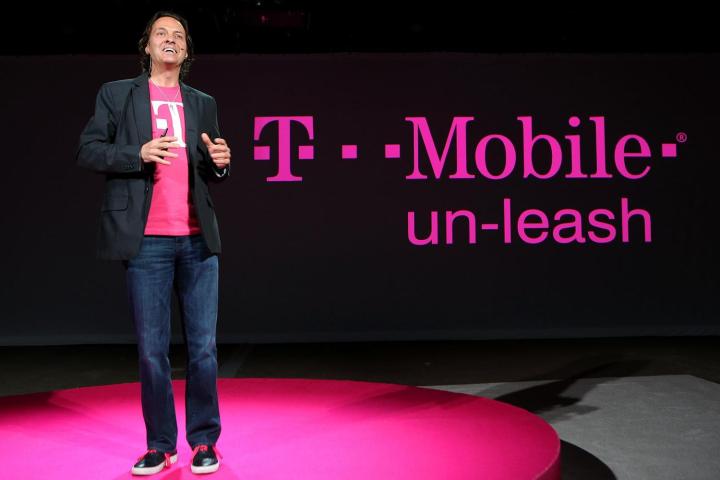
“Jump On Demand is the best way to get a new smartphone whenever you want. Zero fees. Zero wait. Zero BS.”
Practically every monthly smartphone payment plan requires you to cough up nearly the full retail cost of your device over a specified period before you can upgrade. Not so with T-Mobile’s revamped Jump program — you can upgrade to a new phone up to three times a year at no extra cost, the carrier says. T-Mobile’s done away with the old Jump program’s extra $10 monthly fee, and as long as you’ve got qualifying credit and the phone you’re trading in passes “a quick three-point check-up,” you won’t be charged a down payment, first installment, or even sales tax at upgrade time.
To be sure, enrollment costs aren’t going away completely — They’re just being folded into monthly phone payments. It’s essentially a leasing plan — handset pricing will be “about the same as it would be with regular financing,” T-Mobile said, but it will vary depending on the MSRP of the smartphone in question. The carrier’s running a promotion on the iPhone 6 at Jump On Demand’s launch. You’ll pay $15 per month for a 16GB variant when you trade in another
You can, of course, pay your phone off ahead of time (the promotionally priced iPhone 6 comes to $164, T-Mobile says). You’re free to pay off your device over 18 months or sooner, at which point you can turn it in, upgrade to a new phone, or make a final payment and keep it — just like the old Jump plan.
Jump On Demand isn’t superseding Jump necessarily. Some of the benefits the program introduced, like included phone insurance, are no longer included. You can add insurance for $8 per month to Jump On Demand, though. If you’d rather not switch from the old Jump program, T-Mobile says it’s sticking around for the time being, and in fact will offer a greater selection of devices than Jump On Demand going forward.
“While the carriers are breaking every promise they’ve ever made with their knock-off upgrade programs, we’re racing full speed ahead, making one of our most popular moves even better,” said John Legere, president and CEO of T-Mobile, in a press release. “Jump On Demand is the best way to get a new smartphone whenever you want. Zero out the door. Zero at upgrade. Zero fees. Zero wait. Zero BS.”

Ultimately, Jump On Demand is another step towards a rapidly approaching future without subsidized smartphones. AT&T eliminated two-year contract pricing at third-party retailers earlier this year, and Verizon CEO Lowell McAdam has previously expressed an openness to doing the same. If you prefer to own rather than lease your phone, that’s really only good news if you can afford to buy outright — monthly installment plans are in many cases as restrictive as the two-year agreements they’re replacing.
T-Mobile’s Jump On Demand plan launches on Sunday, June 28.
Editors' Recommendations
- T-Mobile made a $325 suitcase that you may actually want to buy
- T-Mobile wants to give you a free smartphone when you add a line


